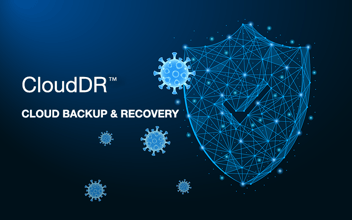If the intangibility of the cloud is keeping you from making this critical business-enhancing move, 2020 trends show organizations are opting for hybrid-cloud environments. Here are 7 reasons why you should take notice.
- Flexibility
Migrating to a hybrid-cloud environment provides a broad range of options to not only operate your IT processes, but also to deliver them. Risk mitigation, integration and workload portability can be more effective and consistent with the ability to leverage one medium over another. By using a mix of IT elements to their fullest capabilities, our AWS-certified engineers can help your company gain flexibility advantages as business goals and objectives change. - Scalability
Trading capital expense for variable expense and reducing hardware expenditures, are only the beginning to the hybrid cloud’s positive impacts. With the ability to quickly and cost-effectively access as many resources as you need on demand, you can alleviate the inefficiencies of putting it all together on-premises. Scaling certain workloads to the cloud further gives you the freedom to innovate at will, so you can get products and services to market faster. - Faster Deployment
Whether you’re working with a managed IT service provider or directly with a cloud provider, the extensive time frame to deploy a new infrastructure has always been a pain point for a variety of reasons. With a hybrid-cloud environment, the overall process of utilizing cloud resources can be automated, in addition to moving faster from the beta stage to production. This works to prevent user resistance caused by lack of productivity in their day-to-day roles and lays a foundation for better change management and culture shift. Protelligent® can provide the upfront planning and integration strategy, along with the expertise and skill for transitioning and migrating. We also have the capabilities to deliver ongoing support and maintenance that extends to your entire IT environment. - Performance and Diminished Latency
Helping end users understand the value of cloud computing in their day-to-day roles is one of the biggest trends organizations are facing in modifying company culture. Since cloud computing is fundamentally different than a traditional on-premises environment, network issues, such as latency, can be particularly bothersome and difficult to alleviate on the fly. Hybrid-cloud models provide the ability to create a direct connection and overcome the unpredictability of internet speeds. Distance-based latency can also be reduced with proper load balancing by ensuring infrastructure is delivered from the closest location. Not only does this offer better operational performance, but also ultimately demonstrates the value of cloud computing to your end users. - Improved Security and Risk Management
While cloud-service providers, in general, offer exceptional security, they are only responsible for what they can control. Understanding all the risks in a cloud environment and using best practices is essential to effectively securing it. Fundamentally, public clouds are far more open than private networks. This makes them more vulnerable to data leakage and breaches. With a hybrid-cloud environment, organizations can better manage risk by leveraging the best of both cloud worlds – the security advantages of a private cloud, as well as the capabilities of a public cloud. Extensive encryption measures will safeguard privately-stored data in transit to the public cloud for analytics and other processes, while controlling user-access rights will add another layer of protection. Our Premonition™ Security Suite offering can deliver peace of mind that your entire environment is proactively secured and nothing is left to chance. - Enhanced Application Integration
Even though great strides have been made, many companies are finding that not everything belongs in the cloud. Security issues and expense are not the only concerns. Integration and internal process failures caused by moving applications that are not yet cloud-ready can severely hamper the stability of your ecosystem, as well as your bottom line. Thankfully, most of today’s applications have hybrid-cloud integration built in, providing the ability to extend databases from locations on premises to the cloud. This establishes the agility required to easily match business conditions. It also delivers resiliency and more than one option in the event of a service outage.We have the in-depth knowledge, expertise and service offerings to properly plan, migrate and manage every aspect of your hybrid-cloud environment for every possible scenario as you grow.
- Effective Backup and Disaster Recovery
Hybrid-cloud models bring a host of key advantages to backup and disaster recovery, including management and compliance. When partnering with certified AWS experts, like Protelligent, the setup, configuration, ongoing maintenance and monitoring of the on-premises environment becomes our responsibility. Through data replication, copies of highly-sensitive data are stored to both a cloud solution, as well as in a different location to the main systems, reducing data loss and downtime. Switching between these disaster recovery sites can be done from one interface for easy management. Plus, with access to your own private network, you can better maintain compliance by replicating and encrypting data before it’s transferred to the recovery site.
If you’re still not entirely convinced, perhaps this will change your mind. According to the Nutanix Enterprise Cloud Index 2019, 85% of companies rank hybrid-cloud as the “ideal” IT operating model. There is no getting away from the fact that conducting business in the cloud is more efficient, productive and cost-effective. By utilizing the combination of Protelligent’s service offerings and our AWS-certified cloud knowledge – from our architects to our CEO – we can help position your organization to accelerate growth and success well into the future. Contact us now at (855) PRO-TELL and get the confidence you need to fuel innovation in the cloud.




